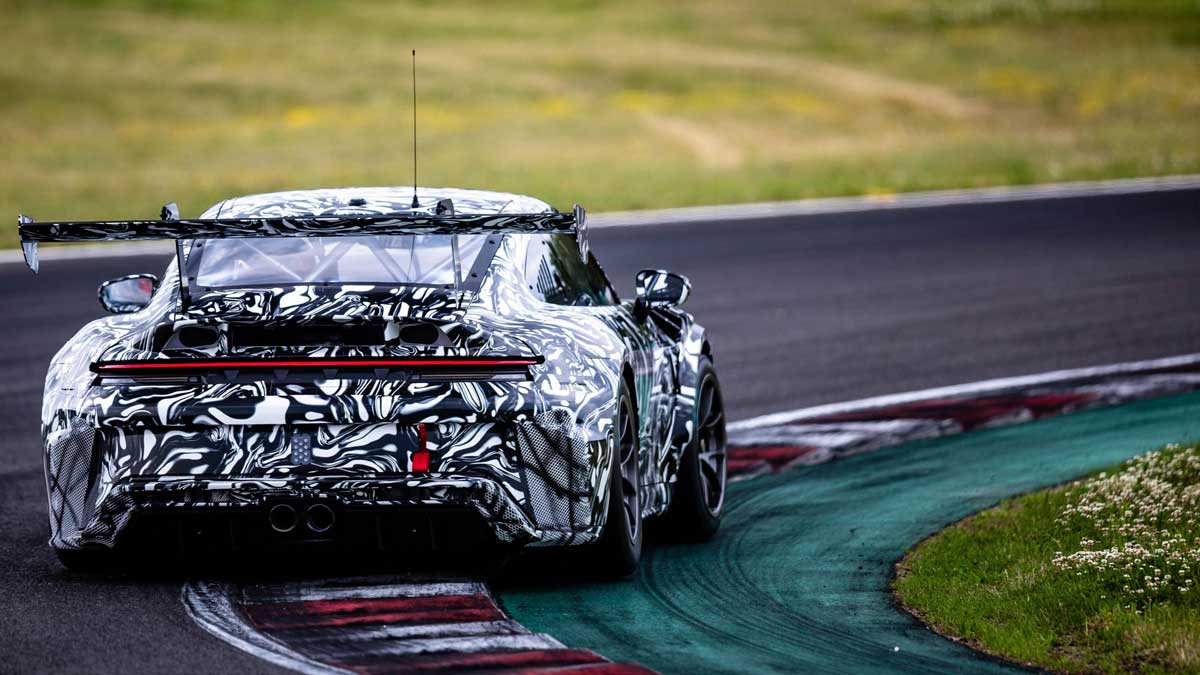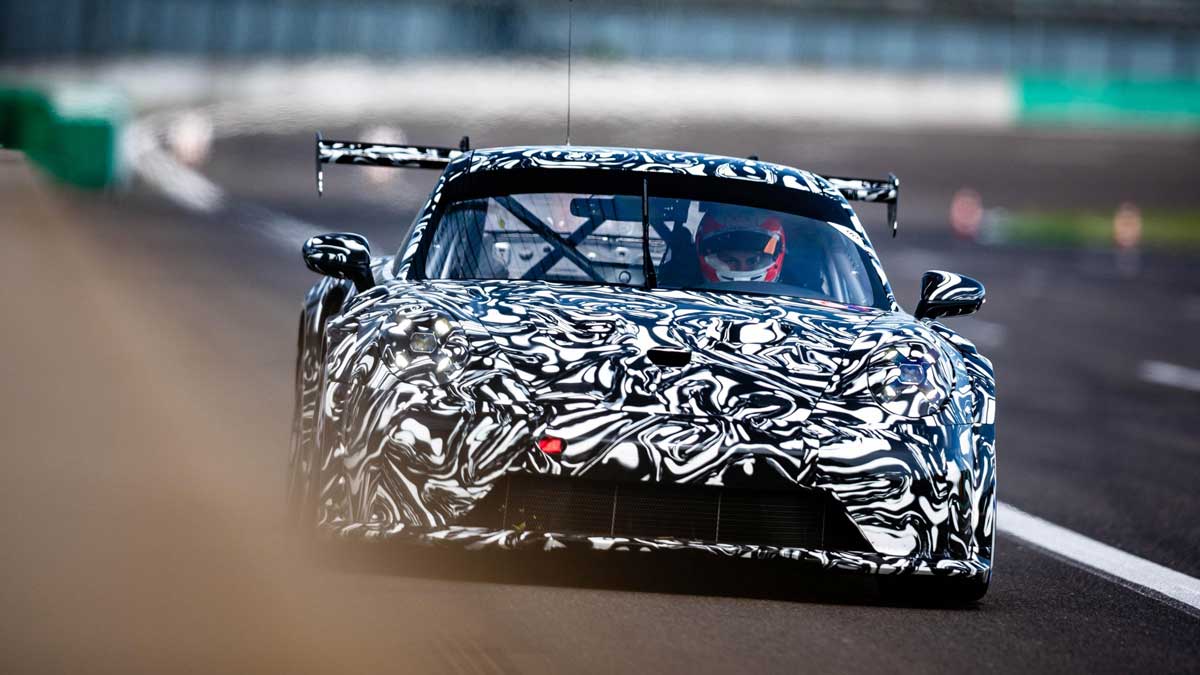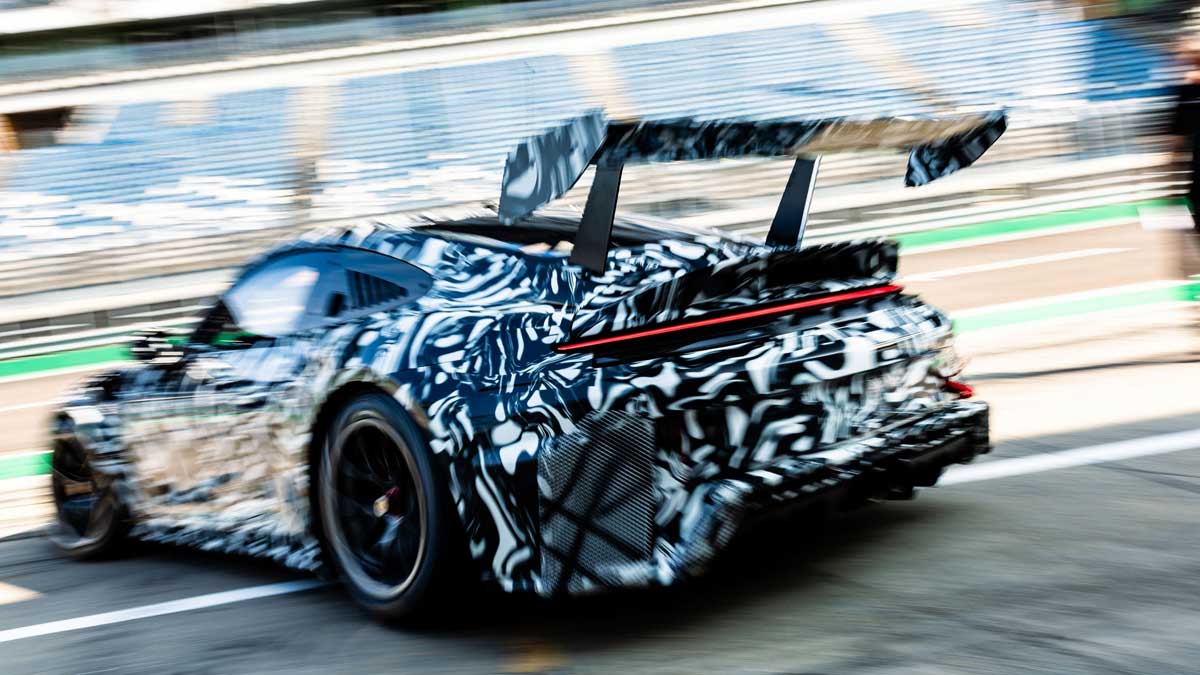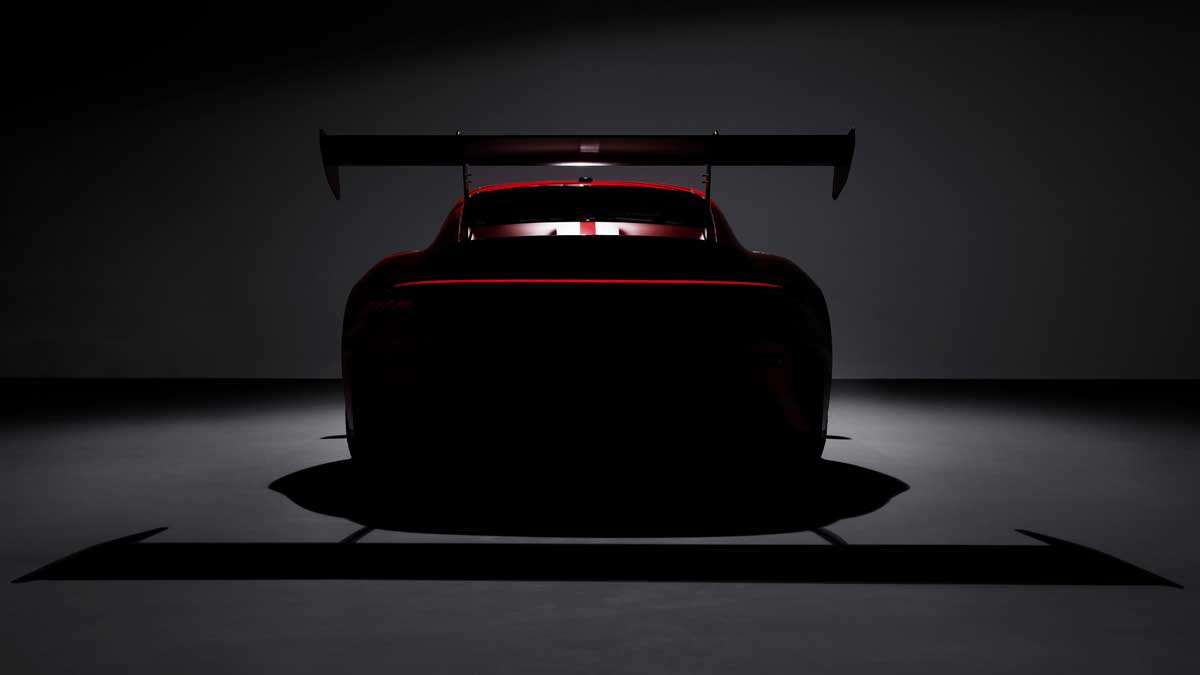The new 911 Cup (992.2) will be available from the start of the 2026 season.
The new 911 Cup, which will be the new Porsche 911 GT3 Cup, was announced on August 8, 2025.
The most surprising thing about this announcement is that the name "911 GT3 Cup" has been dropped.
From now on, the name of the racing car used in one-make cups such as the Porsche Mobil 1 Supercup and various Carrera Cup championships will simply be "911 Cup" starting with the 992.2 model.

The latest 911 Cup Car is equipped with a naturally aspirated 4.0-liter horizontally opposed six-cylinder engine, with an output of 382kW (520PS), 10PS more than the previous model.
From now on, car names that combine the "GT" name with numbers (such as "GT3") will only be used for open brand racing series or models for specific categories. For example, the evolved version of the new 911 GT3 R, which was unveiled for the first time on the same day, is an example of this - this one has the name "GT3".
※↑ThisThe new 911 GT3R will be described separately.To do.

The 911 Cup Car is designed based on the road-legal 911 GT model and is produced alongside the mass-produced car at Porsche's headquarters in Zuffenhausen.
This method has proven highly effective, with 1,130 units already manufactured since production of the current 911 GT3 Cup car began at the end of 2020.
To date, a total of 5,381 Porsche 911s have been produced exclusively for one-make races.
Adapted design and improved aerodynamics
The new 911 Cup also stands out from its predecessor in terms of appearance, with the front end reflecting the design of the 992.2 generation 911 GT3.
The front spoiler lip has a three-part structure, so if it is damaged by contact, only the damaged part can be replaced, which is very convenient for users.
This will also reduce packaging and transportation costs for replacement parts.
The elimination of daytime running lights was also for the same purpose, as there is no longer any risk of damaging the rear radiator in the event of a collision, and there is no longer any need to replace the lights themselves.

The front fenders have integrated louvered vents that improve airflow within the wheelhouses and increase downforce on the front axle.
A similar effect is achieved by the aerodynamically optimised underbody, which is said to have a positive impact on the vehicle's driving performance, just like the standard model, and ``turning vanes'' positioned behind the front wheel arches improve airflow around the front end.
These elements work together to improve front axle responsiveness at high speeds, allowing the car to be controlled more precisely before each corner.
The rear of the new 911 Cup has been completely redesigned with a more aggressive look.
The swan-neck rear wing has an improved connection with the wing stay, making it easier to adjust the position and handle.

The engine hood has also been thoroughly redesigned and, like almost every other body part, including the doors, is made from a combination of recycled carbon fiber fleece and bio-based epoxy resin.
For example, by reusing scraps generated in other manufacturing processes to produce fleece, the company not only reduces the environmental impact but also contributes to stabilizing the prices of repair parts.
racing engine
The water-cooled, high-revving six-cylinder engine continues to use a naturally aspirated system, while the powerful 4.0-liter horizontally opposed engine is based on the unit installed in the Porsche 911 GT3.
Additional parts derived from the mass-produced engine include individual throttle valves with optimized flow rate and camshafts with extended valve opening times, which eliminate the need for a centrally positioned throttle valve and instead allow the installation of an air restrictor, which is required in other motorsport championships.

Despite the 10PS increase in power output, the engine's durability remains unchanged, and it can be overhauled every 100 hours of circuit driving.In addition, three types of exhaust systems are available to comply with noise regulations that vary depending on the race series, circuit, and region.
There are different regulations in different places, so it must be quite difficult to create something that can comply with them.
The latest model features a more durable four-disc sintered metal racing clutch that transmits engine power to a sequential six-speed dog gearbox. This upgrade has made it possible to raise the engine speed, which was previously limited to 6,500 rpm during a standing start, further enhancing the sound production at the beginning of the race.
I'd like to hear that ^^

It also comes equipped with a new automatic engine restart function that activates as soon as the driver steps on the clutch pedal in the event of an accidental stall. ...I see, even the amazing drivers who race in cup cars like this (it's not a normal manual, so I don't know how it works) sometimes accidentally stall the engine (?).
In addition, a new stroboscope function has been added to the brake lights, which can warn following vehicles especially during the starting phase, eliminating the need for hazard lights, which were previously used for safety purposes.

Improved brake performance and extended life
The braking system has been significantly improved, with 380mm diameter discs on the front axle and a cross-sectional thickness increased from the previous 32mm to 35mm.
This allows the cooling channel for self-ventilation to be enlarged, improving heat dissipation performance.
The background to this development was the relocation of the center water cooler to the rear of the front trunk, which made it possible to direct cooling air from the center of the front directly to the brakes.

In addition, the outer diameter of the brake disc hat has been reduced, increasing the friction area between the disc and brake pad.
This not only results in more efficient deceleration performance, but also improves durability by increasing the width of the brake pads, ensuring reliability in long-distance races and extending the life of each component.
Additionally, Bosch M5 Racing ABS is standard on all 911 Cup cars.
The system also has enhanced data processing capabilities to handle signals from the newly added acceleration sensor, and more advanced software is now able to warn the driver if a leak occurs in either of the two brake circuits.
In addition, the brake fluid reservoir capacity has been increased, making it suitable for long-distance races.

In addition, by adjusting the steering stopper, the steering angle of the electronically controlled power steering is increased, reducing the minimum turning radius, making it easier to maneuver in narrow urban areas, and the increased steering angle also makes it possible to more effectively correct oversteer when it occurs.
Hmm? How to handle it in urban areas?
Simplify operation during the race and in the pits
The steering is now a redesigned, high-quality multi-function steering wheel, which not only improves the design but also has practical benefits, such as a central rotary control that allows adjustment of ABS intervention and traction control.
Furthermore, the newly designed operation buttons with color illumination improve the visibility of each label.
The center control panel next to the seat is positioned so that the driver can easily access and operate it even during a race.
The number of physical switches has been reduced from the previous 10 to 8, and pressing the button on the bottom right now displays an additional menu page on the display.

This allows a wide range of detailed settings, such as pit lane speed, exhaust mapping and steering angle reset, to be adjusted directly from inside the car, eliminating the need to connect a laptop and improving team work efficiency.
Additionally, foam padding has been added to the inside of the door crossbars to provide added protection for the driver's arms, legs, and feet.
The new 911 Cup also features upgraded electronic systems that contribute to improved driving performance. The TPMS (Tyre Pressure Monitoring System) now displays tire air temperature on the central dashboard display.
To measure lap times and location information, a significantly improved GPS antenna is used instead of the conventional infrared method.

It also integrates proven features from the higher-end 911 GT3 R. These include lap time measurement when passing through the pit lane and a "pre-kill" function that automatically shuts off the engine when the vehicle comes to a complete stop during a pit stop.
In addition, a new electronic monitoring system has been installed to constantly check the charge status of the fire extinguisher activation unit, which is powered by an independently powered 9-volt battery.

In developing the 911 Cup, Porsche Motorsport has once again partnered with Michelin to develop a new generation of tires for the one-make cup cars.
Field tests were conducted at the Monza Circuit in Italy, the Lausitzring in Brandenburg, and the test track at Porsche's Weissach Development Centre.
Test drivers included former Porsche juniors Bastian Buus, Laurin Heinrich and Klaus Bachler, as well as experienced racing driver Marco Seefried.
I'm looking forward to the day when I can meet this new car, which has also been renamed "911 Cup".

Source:(Official)The new 911 Cup – stronger performance for the successful one-make model
Related article:
◆The 992.2 Porsche 911 GT3 Cup is under development for the 2026 season
◆Encounter with the 992 Porsche 911 GT3 Cup Car (GENROQ interview visit)
◆The 992 Porsche 911 GT3 Cup has been announced!
◆Porsche 911 GT3 Cup Car (992) domestic price
◆992 Porsche 911 GT3 Cup, so many in a row, it's just too cool

